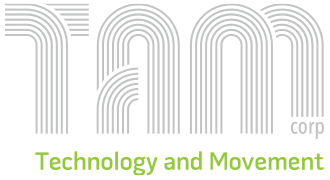Accelerating the Use and Benefits of Cooperative Intelligent Transportation Systems (C-ITS) over the Next Two Years
Cooperative Intelligent Transportation Systems (C-ITS) hold immense potential to transform our transportation systems by improving road safety, traffic efficiency, and environmental sustainability.
To fully harness the benefits of C-ITS, it is crucial to accelerate its deployment and adoption. In this discussion paper, we present strategies to expedite the use and maximise the advantages of C-ITS over the next two years.
1. Infrastructure Development: Investments in infrastructure are paramount for the successful implementation of C-ITS. Governments and private entities should collaborate to deploy necessary infrastructure such as roadside units, dedicated communication networks, and sensor technologies. Initiatives should focus on prioritising high-traffic areas, urban corridors, and freight routes to maximise the immediate impact of C-ITS.
2. Standardisation and Interoperability: To promote widespread adoption, it is vital to establish global standards for C-ITS technologies. Standardization efforts should aim to ensure interoperability, compatibility, and seamless communication between vehicles, infrastructure, and other road users. Governments, industry leaders, and standardization bodies should collaborate to accelerate the development and implementation of common protocols and frameworks.
3. Regulatory Support: Government policies and regulations play a crucial role in fostering the adoption of C-ITS. Authorities should create an enabling regulatory environment by providing clear guidelines, incentives, and supportive frameworks for C-ITS deployment. Encouraging public-private partnerships and establishing regulatory sandboxes can facilitate experimentation, innovation, and the rapid integration of C-ITS technologies into existing transportation systems.
4. Public Awareness and Education: Raising public awareness about the benefits of C-ITS is essential for its acceptance and adoption. Governments and stakeholders should invest in public education campaigns to inform citizens about the safety, efficiency, and environmental advantages offered by C-ITS. Demonstrations, pilot projects, and public trials can be effective tools to showcase the real-world benefits and build trust among the public.
5. Collaboration and Knowledge Sharing: Collaboration among industry players, governments, research institutions, and academia is crucial to accelerate the use of C-ITS. Establishing platforms for knowledge sharing, exchanging best practices, and fostering collaborative research can facilitate the rapid development and implementation of C-ITS technologies. Public-private partnerships should be encouraged to pool resources, expertise, and funding.
Accelerating the use and benefits of C-ITS over the next two years requires a multi-faceted approach involving infrastructure development, standardisation, regulatory support, public awareness, and collaboration. By implementing these strategies, we can overcome the challenges associated with C-ITS deployment and unlock its transformative potential, leading to safer, more efficient, and sustainable transportation systems. It is imperative that governments, industry leaders, and stakeholders work together to drive the widespread adoption of C-ITS and usher in a new era of intelligent transportation.


